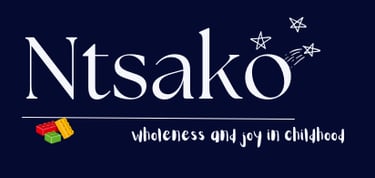
The Evolution of the Concept of the Child Part 1: A History
Part 1.2 - A dive into how the concepts of childhood and the child have changed over the years, better understanding social elements involved. The history - and future - of childhood is more complex than we think
ISSUE 1
VJ Tlakula
4/11/20255 min read


How The Concept of the Child has changed over the years
Philippe Ariès in his 1960 book Centuries of Childhood argues that childhood is merely a concept created by society. In some ways, I am inclined to agree. The concepts of ‘the child’ and ‘childhood’ have changed drastically over the years, often to suit various adult agendas and social advancements such that I don’t believe that how we see it today has ever been set in stone or an objective truth.
Yes, there are many similarities in how children thought or played or even their position in society, but childhood, as we understand it today, was not always understood how it is now.
Some History
Most cultures have followed a mostly similar path in the conceptualisation of childhood, despite different social structures and the requirements of the members of those societies (including children). With the influence of colonisation and increased modern globalisation, much of the world has come to conceptualise and treat the child the same way.
We partly have the UN to thank for that, as they have introduced multiple laws, based mostly on western values, which nearly all the countries of the world have agreed, and are therefore subject, to. There is so much to discuss as the evolution of childhood has roots in sociology, philosophy, anthropology, economics, biology, and so much more. It’s almost like various things were happening all at once and they all converged to create what we see today.
This is a rich history, but for now, we take the basic overview. Because most of the world currently holds a western view of childhood, I’ll focus on the western evolution. This doesn’t mean that these changes and values applied only to western society or that theirs is the only important one worth considering, though.
Pre-Middle Ages, not much is documented about children. We know that across cultures childhood was a time of hard work with some play, which often ended in marriage. Though we don’t know much beyond that except that life and the world looked very different. Although the loving family unit was quite important, children were not always considered important to protect. Even though it was understood that they were different and developing, in practice, they were usually treated like adults. History across cultures shows heavy expectations being placed on children, as well as harsh consequences for any transgressions.
From the Middle Ages throughout much of the early industrial revolution, the main focus was survival. Most families did not have the capacity to focus on anything beyond that. They struggled in extreme poverty and there were very high rates of infant and child mortality. So, many children did not live long enough to fully realise any kind of childhood. For a long time, how children were raised and trained centred largely around their contribution to the family. Due to the high poverty, although they were loved, children were largely valued as much as they could contribute to supporting the family and were seen as burdensome if they didn’t.
So, this meant working on farms and in fields, working as servants, or working in the factories. Most children began working formally as soon as they were able to, often around age 6. During this time, childhood was a time of preparation for the future, with families, especially mothers, being responsible for raising and guiding children, and shaping their morals and social values.
The more modern idea of childhood only really began to emerge in the 1600s (17th century) as adults began to see them as individuals having different needs, value, and capacity. Promoted by philosophers like John Locke and Jean-Jacques Rousseau, adults increasingly came to see children as an innocent tabula rasa (blank slate), who needed protection due to their vulnerability.
Childhood became seen as a fleeting sanctuary filled with joy which should be enjoyed before entering the difficulty of adulthood - thus, it needed to be protected. Such thinking began to change social opinion on the goal of childhood and had implications for developmental understanding.
However, when children, particularly those in poorer families, were put to work in the factories during the industrial era of the 18th century, people noticed the growing difference between what children ‘were’ and how they were living. They were exploited and treated like normal employees. Made to work long hours in poor conditions, and not given much room to play and explore. It was around this time that the first children’s rights began to appear and formal education took a more defined role in their lives, providing a new avenue of socialisation.
As society modernised, the quality of children’s education also changed. Rather than simply preparing children for the gender-specific tasks they would perform later in life, there were more opportunities for variety in the workforce. Children needed specific education and training to prepare them for this new society. Children’s literature and activity evolved from being merely educational to delighting their imaginations.
This also brought about more questions on how exactly children develop, the span of childhood (which was previously often only ended by marriage) and what should be emphasised when. The stages of childhood were also split, better defined, emphasised, and studied more in depth. Where there was previously more emphasis on the moulding of the child to become someone, now there was more curiosity about how they really worked and developed biologically and how best to nurture their development. Better understandings of their capacity, capability, and need for protection also evolved.
As mere survival became slightly less of a focus, there was less of a need to ‘cut off’ childhood, and more desire to better understand childhood and allow development to flourish at its pace and level. This changed society’s expectations of children. While this was largely a social change, it coincided with more being understood about children and their development biologically.
Modern concept of the child and childhood
The main idea of the modern concept of childhood is that childhood requires a family as a protective space and that childhood should be a time of joy and fun. This idea is what we see today and is included within children’s rights. This is contrasted with the previous idea of children being meant to work family and other jobs. This marks a change from children being for the family to the family being for children. This is a beautiful change because it impacts how the child and their purpose is thought of. This is where the child becomes more valued as a distinct individual.
Childhood went from barely being recognised as a stage with rights, to having myriad rights with many implications. There is now more consideration of, and protection for their development, treatment, and wellbeing. Children are seen as individuals with more decisive rights than they have ever had before. While in many ways, the evolved concept of the child is very good, it seems to have brought up some issues (to be discussed in a later piece). One such issue being the shift from the family being the main vehicle for teaching children social values to the state and society having more of a say, for both better and worse.
To better understand exactly how these changes caused our modern ideas and see some social considerations, read part 2 here.






Share your Comments Below!
Please feel free to reach out with any comments, questions, and child-related stories
Celebrating childhood and development
© Ntsako Wholeness and Joy in Childhood 2025. All rights reserved.
Copyright Vutlhari Joy Tlakula 2025. All Rights Reserved.


